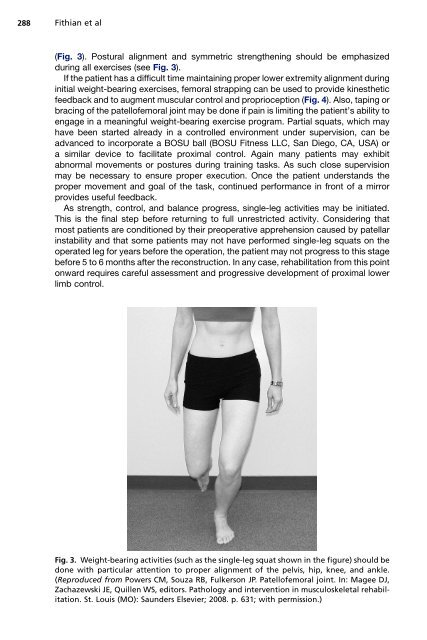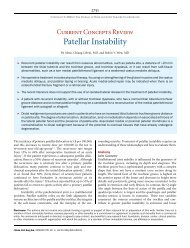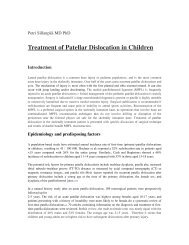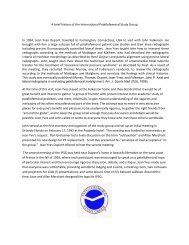Rehabilitation of the Knee After Medial Patellofemoral Ligament ...
Rehabilitation of the Knee After Medial Patellofemoral Ligament ...
Rehabilitation of the Knee After Medial Patellofemoral Ligament ...
- No tags were found...
You also want an ePaper? Increase the reach of your titles
YUMPU automatically turns print PDFs into web optimized ePapers that Google loves.
288Fithian et al(Fig. 3). Postural alignment and symmetric streng<strong>the</strong>ning should be emphasizedduring all exercises (see Fig. 3).If <strong>the</strong> patient has a difficult time maintaining proper lower extremity alignment duringinitial weight-bearing exercises, femoral strapping can be used to provide kines<strong>the</strong>ticfeedback and to augment muscular control and proprioception (Fig. 4). Also, taping orbracing <strong>of</strong> <strong>the</strong> patell<strong>of</strong>emoral joint may be done if pain is limiting <strong>the</strong> patient’s ability toengage in a meaningful weight-bearing exercise program. Partial squats, which mayhave been started already in a controlled environment under supervision, can beadvanced to incorporate a BOSU ball (BOSU Fitness LLC, San Diego, CA, USA) ora similar device to facilitate proximal control. Again many patients may exhibitabnormal movements or postures during training tasks. As such close supervisionmay be necessary to ensure proper execution. Once <strong>the</strong> patient understands <strong>the</strong>proper movement and goal <strong>of</strong> <strong>the</strong> task, continued performance in front <strong>of</strong> a mirrorprovides useful feedback.As strength, control, and balance progress, single-leg activities may be initiated.This is <strong>the</strong> final step before returning to full unrestricted activity. Considering thatmost patients are conditioned by <strong>the</strong>ir preoperative apprehension caused by patellarinstability and that some patients may not have performed single-leg squats on <strong>the</strong>operated leg for years before <strong>the</strong> operation, <strong>the</strong> patient may not progress to this stagebefore 5 to 6 months after <strong>the</strong> reconstruction. In any case, rehabilitation from this pointonward requires careful assessment and progressive development <strong>of</strong> proximal lowerlimb control.Fig. 3. Weight-bearing activities (such as <strong>the</strong> single-leg squat shown in <strong>the</strong> figure) should bedone with particular attention to proper alignment <strong>of</strong> <strong>the</strong> pelvis, hip, knee, and ankle.(Reproduced from Powers CM, Souza RB, Fulkerson JP. Patell<strong>of</strong>emoral joint. In: Magee DJ,Zachazewski JE, Quillen WS, editors. Pathology and intervention in musculoskeletal rehabilitation.St. Louis (MO): Saunders Elsevier; 2008. p. 631; with permission.)






